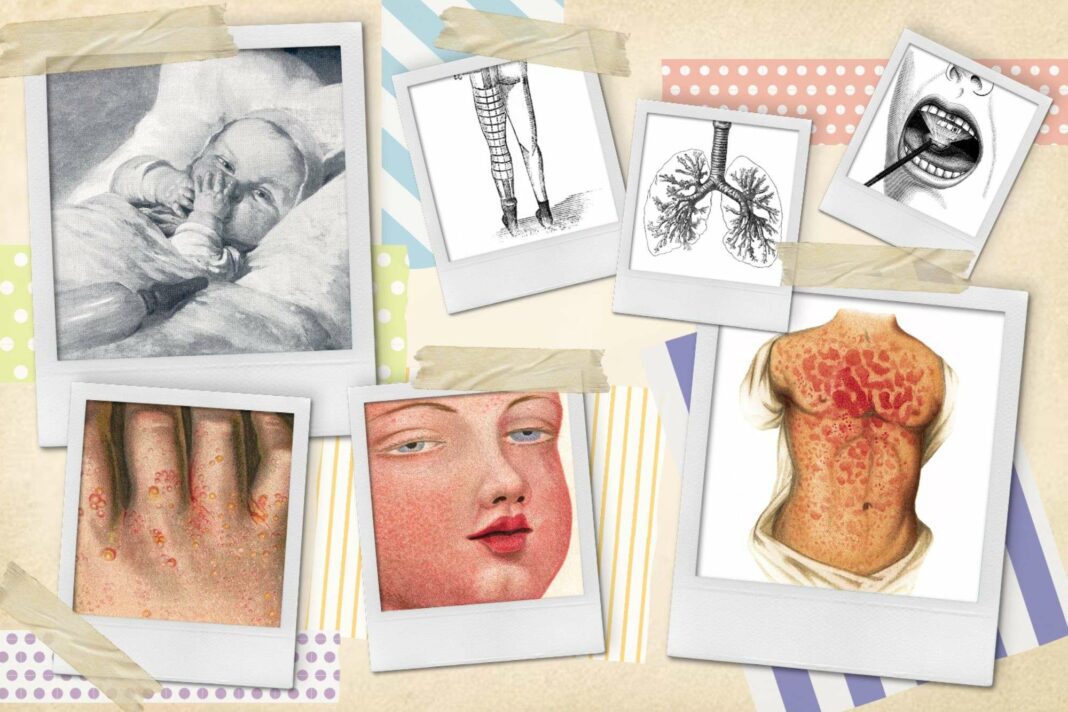Une myriade de maladies victoriennnes, jadis considérées comme des relictes du passé, sont en reprise, selon les experts. Une baisse des taux de vaccination, la crise du coût de la vie, de mauvaises habitudes alimentaires et la malnutrition contribuent à cette résurgence. Entre 2018 et 2023, près de 50 000 hospitalisations ont été attribuées à ces maladies, avec des chiffres similaires à prévoir pour cette année. Cet article examine plusieurs de ces affections, de la scorbut jusqu’à la syphilis, tout en détaillant leurs symptômes.
These ailments are often considered relics of the past, yet specialists are noticing a resurgence of numerous Victorian-era diseases.
Falling vaccination rates, the economic crisis, subpar diets, and malnutrition are contributing to the comeback of these harmful infections.
Data from NHS Digital indicates that nearly 50,000 hospital admissions from ‘Victorian diseases’ occurred between 2018 and 2023.
Experts believe that this year’s statistics are unlikely to tell a different tale.
This report examines these historic diseases, including those with even deeper roots, and highlights the symptoms to be vigilant about.
1. SCURVY
Though first documented in Ancient Greece and Egypt, scurvy is returning, according to medical professionals.
This condition arises from insufficient vitamin C, typically found in fresh fruits and vegetables.
Traditionally linked to sailors on lengthy voyages in the Middle Ages, scurvy is now being flagged for resurgence by doctors in the BMJ Case Reports.
While entirely treatable, the historical stigma surrounding the disease could lead to misdiagnosis as it shares symptoms with other conditions, like vasculitis, which could escalate into serious complications if left untreated.
Symptoms may surface within a month after consuming fewer than 10mg of vitamin C daily.
Dr. Helen Wall, a senior GP at NHS Oaks Family Practice in Bolton, states: “Chronic lack of vitamin C over time leads to scurvy. One distinct feature of scurvy is the appearance of red or blue spots on the skin, primarily on the legs and feet.”
The NHS states that scurvy symptoms can include:
- Persistent fatigue and weakness
- Irritability and frequent sadness
- Pain in muscles, joints, or legs
- Swollen and bleeding gums, occasionally leading to tooth loss
- Red or blue spots on the skin, mainly on the legs and feet (less visible on darker skin)
- Easy bruising of the skin
2. RICKETS
Rickets, historically tied to poverty and poor nutrition, was diagnosed in 28,379 individuals in the UK between 2019 and 2023, based on an FOI request to 78 hospitals by the Liberal Democrats.
The East Kent Hospitals University NHS Trust noted 580 cases in 2023, marking a 380 percent rise from 2019’s 122 cases.
This condition impacts bone development in children, causing discomfort, stunted growth, and resulting in soft, fragile bones that may deform.
Primarily due to a deficiency in vitamin D, which the body produces when exposed to sunlight, rickets can also be found in fatty fish (like salmon and mackerel), red meats, and egg yolks.
Indicators of rickets may include:
- Delayed growth
- Hindered motor skills
- Discomfort in the spine, pelvis, and legs
- Muscle weakness
Due to rickets softening the growth areas at the ends of a child’s bones (growth plates), it can lead to skeletal deformities such as:
- Bowed legs or knock knees
- Thickened wrists and ankles
- Protrusion of the breastbone
3. SCABIES
The Royal College of General Practitioners urges individuals not to overlook an itchy rash that might indicate scabies, a contagious skin disease.
The condition now affects three in every 100,000 people in England, double the five-year seasonal average.
Scabies results from a mite that burrows into the skin to lay eggs.
A pharmacist can recommend treatment, but persistent rashes require a visit to your GP.
This condition is notoriously challenging to eliminate and spreads easily among those living in close quarters.
A thorough cleaning of bedding, furniture, and carpets is essential.
Symptoms of scabies include:
- Severe itching, notably at night
- A raised rash or spots
4. TB
Tuberculosis is a bacterial infection that historically claimed the lives of one in seven individuals in England during the early 19th century.
A recent report from the World Health Organization revealed that millions still
